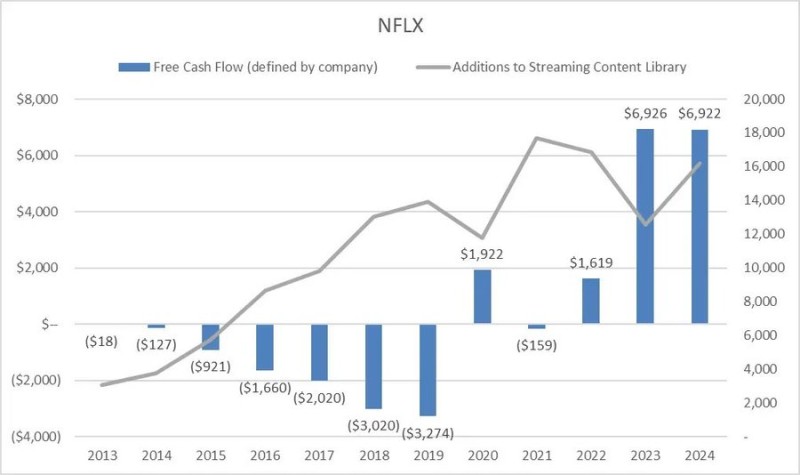⬤ Netflix has emerged as the go-to comparison for frontier AI companies wrestling with huge compute costs. Right now, OpenAI and Anthropic are following a playbook where training expenses dominate spending, creating sustained negative cash flow. Netflix walked this exact same path during its aggressive content expansion, making it a perfect case study for how these economics eventually play out.

⬤ The numbers tell a dramatic story. Netflix hit rock bottom in 2019 with negative cash flow of $3.27 billion as it poured money into building its content library. Throughout the mid-2010s, the company burned through billions while content additions skyrocketed. For AI developers today, each new model generation demands exponentially higher training costs, creating that same widening gap between what they're spending and what they're earning.
⬤ Everything changed starting in 2020 when Netflix flipped to positive $1.92 billion in cash flow. By 2023 and 2024, that figure exploded to nearly $6.93 billion annually, even while content spending stayed high. The shift happened because revenue growth finally outpaced cost expansion. It's the same dynamic AI companies are banking on—eventually your income catches up to your infrastructure spending, or your costs level off.
⬤ This comparison matters because historical precedents for this type of scaling challenge are rare. Netflix proved that massive capital burn doesn't doom a business model if the fundamentals work. For frontier AI companies watching their compute bills spiral, Netflix's arc from $3.27 billion in losses to nearly $7 billion in positive cash flow shows there's a viable path forward once the economics stabilize.
 Usman Salis
Usman Salis

 Usman Salis
Usman Salis


